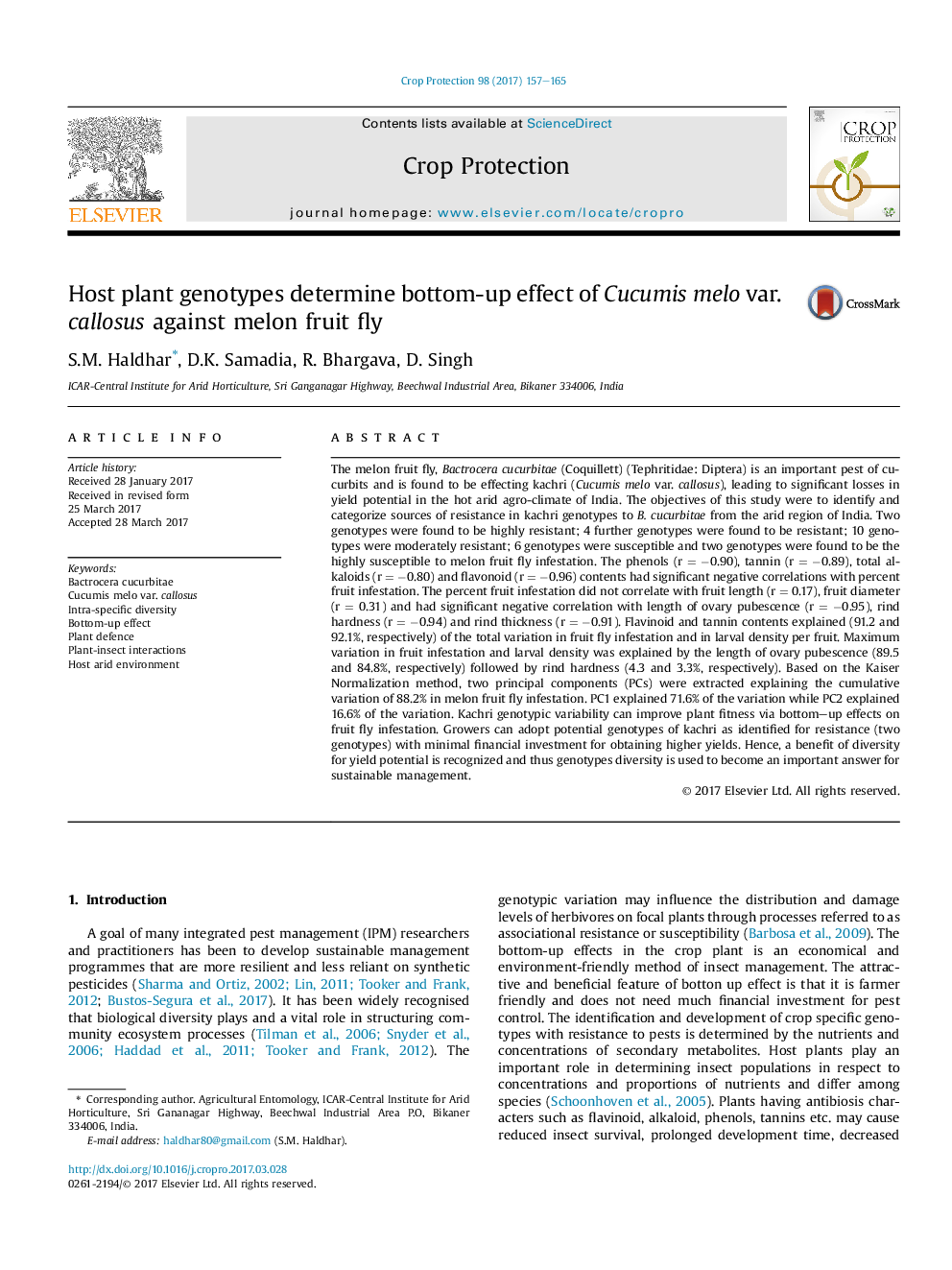| Article ID | Journal | Published Year | Pages | File Type |
|---|---|---|---|---|
| 5760896 | Crop Protection | 2017 | 9 Pages |
Abstract
The melon fruit fly, Bactrocera cucurbitae (Coquillett) (Tephritidae: Diptera) is an important pest of cucurbits and is found to be effecting kachri (Cucumis melo var. callosus), leading to significant losses in yield potential in the hot arid agro-climate of India. The objectives of this study were to identify and categorize sources of resistance in kachri genotypes to B. cucurbitae from the arid region of India. Two genotypes were found to be highly resistant; 4 further genotypes were found to be resistant; 10 genotypes were moderately resistant; 6 genotypes were susceptible and two genotypes were found to be the highly susceptible to melon fruit fly infestation. The phenols (r = â0.90), tannin (r = â0.89), total alkaloids (r = â0.80) and flavonoid (r = â0.96) contents had significant negative correlations with percent fruit infestation. The percent fruit infestation did not correlate with fruit length (r = 0.17), fruit diameter (r = 0.31) and had significant negative correlation with length of ovary pubescence (r = â0.95), rind hardness (r = â0.94) and rind thickness (r = â0.91). Flavinoid and tannin contents explained (91.2 and 92.1%, respectively) of the total variation in fruit fly infestation and in larval density per fruit. Maximum variation in fruit infestation and larval density was explained by the length of ovary pubescence (89.5 and 84.8%, respectively) followed by rind hardness (4.3 and 3.3%, respectively). Based on the Kaiser Normalization method, two principal components (PCs) were extracted explaining the cumulative variation of 88.2% in melon fruit fly infestation. PC1 explained 71.6% of the variation while PC2 explained 16.6% of the variation. Kachri genotypic variability can improve plant fitness via bottom-up effects on fruit fly infestation. Growers can adopt potential genotypes of kachri as identified for resistance (two genotypes) with minimal financial investment for obtaining higher yields. Hence, a benefit of diversity for yield potential is recognized and thus genotypes diversity is used to become an important answer for sustainable management.
Keywords
Related Topics
Life Sciences
Agricultural and Biological Sciences
Agronomy and Crop Science
Authors
S.M. Haldhar, D.K. Samadia, R. Bhargava, D. Singh,
